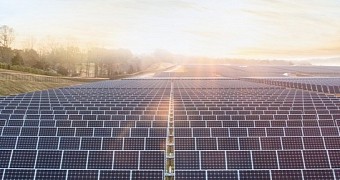Apple CEO Tim Cook’s speech at the Goldman Sachs Tech Conference 2015 included one particularly interesting announcement about the company’s plans in the renewable energy department.
Cook revealed that Apple was prepared to spend nearly a billion dollars on a solar farm meant to power its spaceship campus, dozens of retail stores, and other Apple-owned facilities in the California area.
Apple is less about talking and more about doing
Cook’s speech was impressive. Apple is one of the few technology companies that put considerable amounts of effort into building renewable energy solutions to power its facilities.
“We know at Apple that climate change is real… our view is the time for talk is past and the time for action is now… we’re now running all of our data centres… off renewable energy.. Just today we’re announcing our biggest, boldest and most ambitious project ever…building a solar farm in Monterey County…”
Cook stressed that Apple was doing this not only because it was the right thing to do but also because it was good for business. The CEO noted that, because there’s a fixed price for the renewable energy, the day comes when that investment is fully returned, at which point the energy becomes virtually free.
In collaboration with First Solar Inc.
To create the solar farm, Apple is teaming up with First Solar Inc. and plans to spend $850 million (€750 million) to make the project a reality.
In accordance with their 25-year power purchase agreement, Apple will be getting electricity from 130 megawatts of the solar project. According to First Solar, this is the largest agreement of its kind.
Apple uses renewable energy to power almost all of its data centers across Nevada, North Carolina, and California. The company publishes an annual Environmental Responsibility report and maintains a site with all its environmental endeavors, from its renewable energy efforts to the use of recyclable materials in its products, and even their low power requirements.

 14 DAY TRIAL //
14 DAY TRIAL //